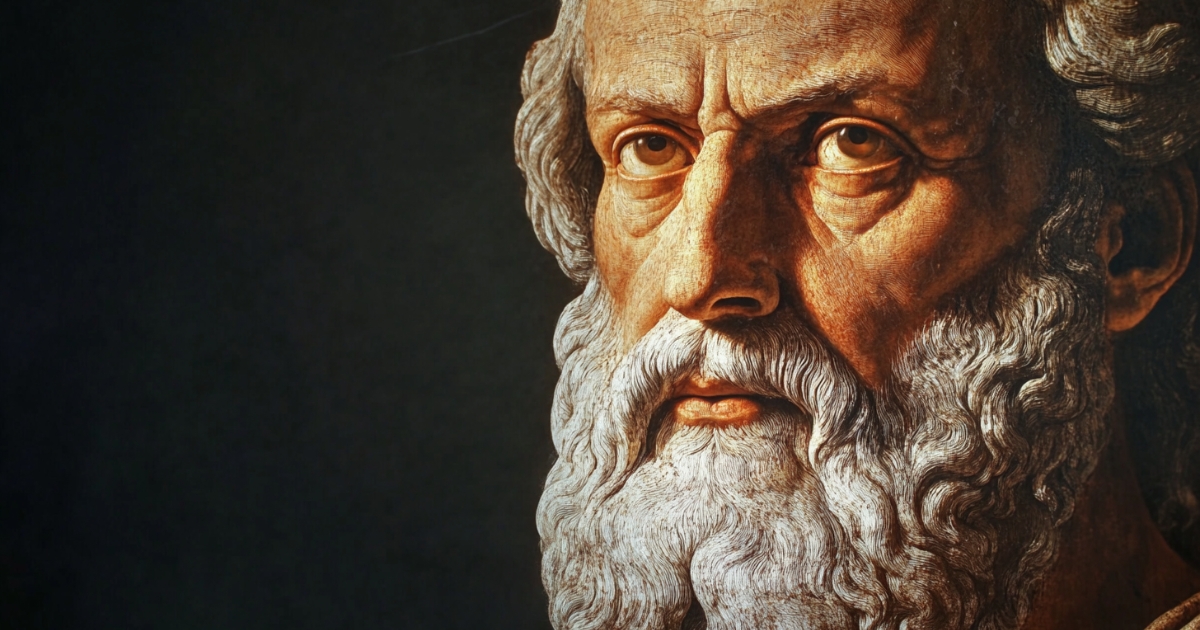Introduction
The ancient Greek philosopher Plato (c. 427 BCE – 347 BCE) is often called the father of Western philosophy due to his profound influence on subsequent philosophical development. Among his most important theories is the “Theory of Forms” (or Ideas). This essay will explain the core of Plato’s Theory of Forms, explore its influence, and examine its relevance to modern philosophy.
Plato’s Life and Intellectual Development
Plato was born into an aristocratic family in Athens and studied philosophy under Socrates from a young age. After Socrates’ execution, Plato traveled to Egypt and Italy, exposing himself to various knowledge and ideas. Around 387 BCE, Plato returned to Athens and established the Academy, where he taught philosophy and further developed his own thoughts.
The Basic Concept of the Theory of Forms
The essence of Plato’s Theory of Forms is the idea that there exists a perfect and eternal “World of Forms” separate from the physical world. Forms represent the essence or perfect version of things, and Plato argued that everything in the physical world is merely an imperfect copy of these Forms.
For example, various “chairs” in the physical world are imperfect copies of the perfect “Form of Chair,” and “beautiful things” are copies of the “Form of Beauty.” For Plato, true knowledge meant recognizing these perfect Forms.
The Allegory of the Cave
A crucial concept for understanding Plato’s Theory of Forms is the “Allegory of the Cave,” a parable described in his work “The Republic.”
Imagine prisoners chained in a cave, only able to see shadows cast on the wall. To them, these shadows are reality. However, if one prisoner were freed and able to see the outside world, he would for the first time understand true reality (the Forms).
This allegory illustrates that many people only perceive superficial phenomena (shadows) of the physical world, failing to recognize true reality (Forms). Plato believed that the role of philosophers was to recognize this true reality and enlighten others.
The Theory of Forms and Epistemology
Plato’s Theory of Forms is also an epistemological theory. Plato argued that true knowledge is obtained not through sensory experience, but by recollecting Forms through rational thought.
This is known as the “Theory of Recollection,” which posits that human souls have seen the World of Forms before birth, and learning is actually the process of recalling these Forms. This idea greatly influenced later rationalist philosophy.
The Influence and Criticism of the Theory of Forms
Plato’s Theory of Forms had an enormous impact on the development of Western philosophy. Many ideas, including Christian theology, medieval universalism debates, and modern rationalist philosophy, are based on Plato’s Theory of Forms.
However, the theory also faced much criticism. Aristotle, Plato’s student, criticized the separation of Forms from the physical world, arguing that essence exists within the physical world. This criticism led to the development of empiricist philosophy.
Modern Philosophy and the Theory of Forms
The influence of Plato’s Theory of Forms remains strong in modern philosophy. For example, philosophical movements such as phenomenology and structuralism can be seen as modern interpretations and developments of Plato’s theory.
In the field of philosophy of science, issues related to Plato’s Theory of Forms, such as the relationship between theory and observation, are still debated. Furthermore, with the development of artificial intelligence and virtual reality, questions about “what is reality” are gaining renewed attention, leading to a reevaluation of Plato’s Theory of Forms from new perspectives.
Conclusion
Plato’s Theory of Forms is a grand philosophical system encompassing many important concepts, including the dualism of the physical world and the World of Forms, the pursuit of true knowledge, and the role of philosophers. Its influence continues to serve as a foundation for Western philosophy from ancient Greece to the present day.
Although sometimes a target of criticism, the Theory of Forms has always undergone new interpretations and developments. In modern society, as new challenges arise questioning the nature of reality, such as virtual reality and simulation theory, Plato’s Theory of Forms remains an important philosophical foundation.
The fact that this theory, born over 2,500 years ago, continues to be at the center of philosophical discussion demonstrates the universality and profundity of Plato’s Theory of Forms.


